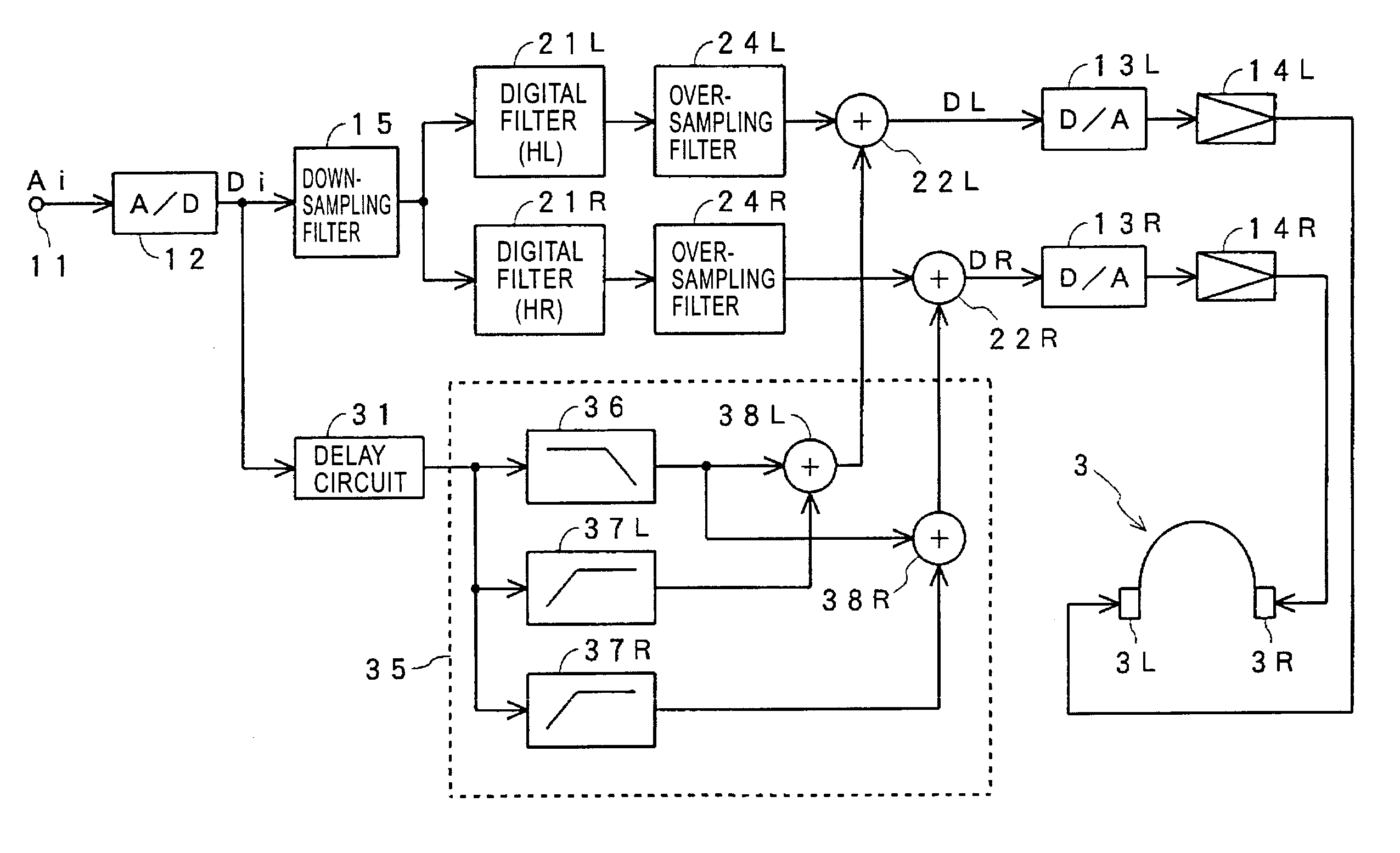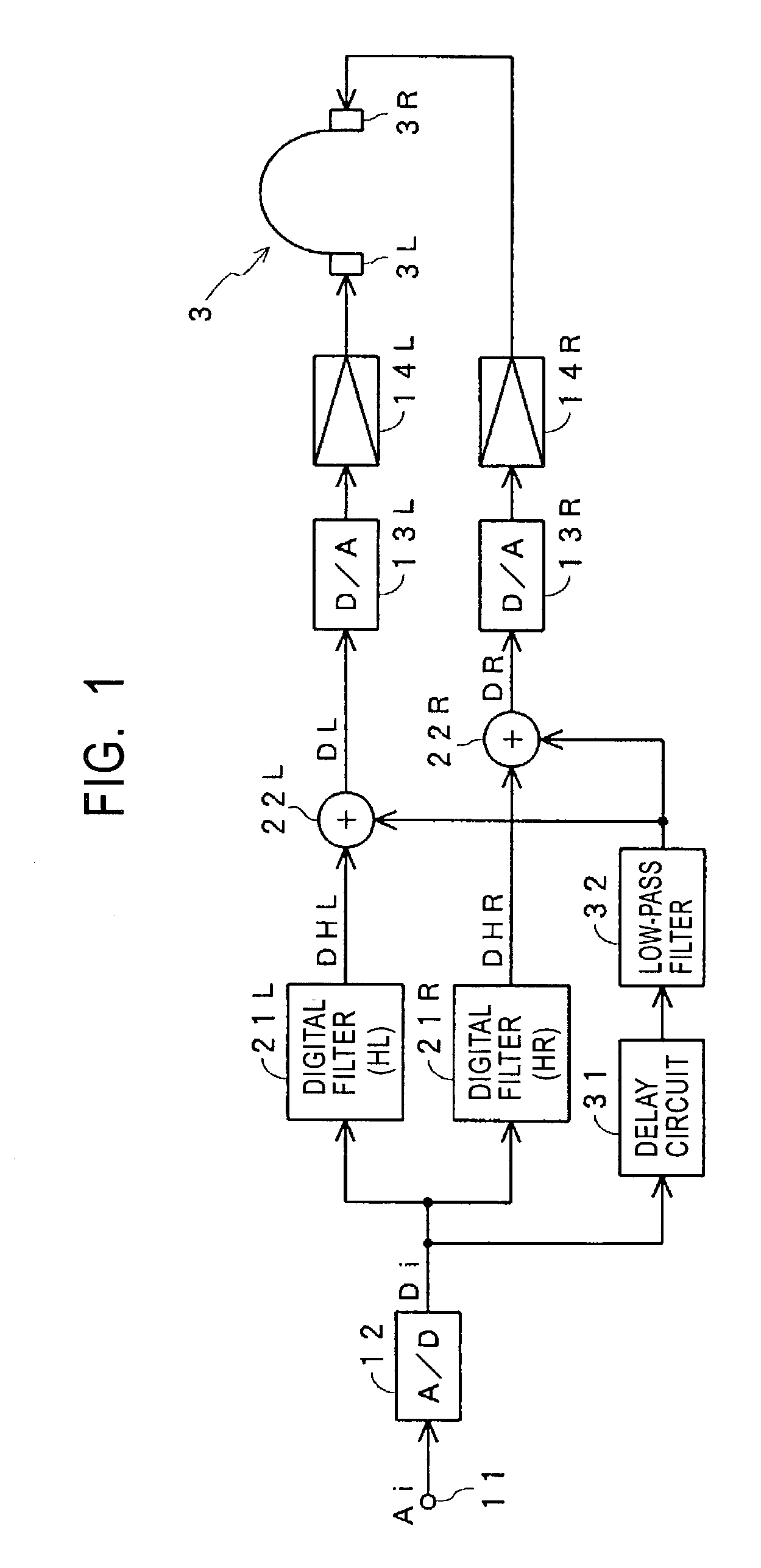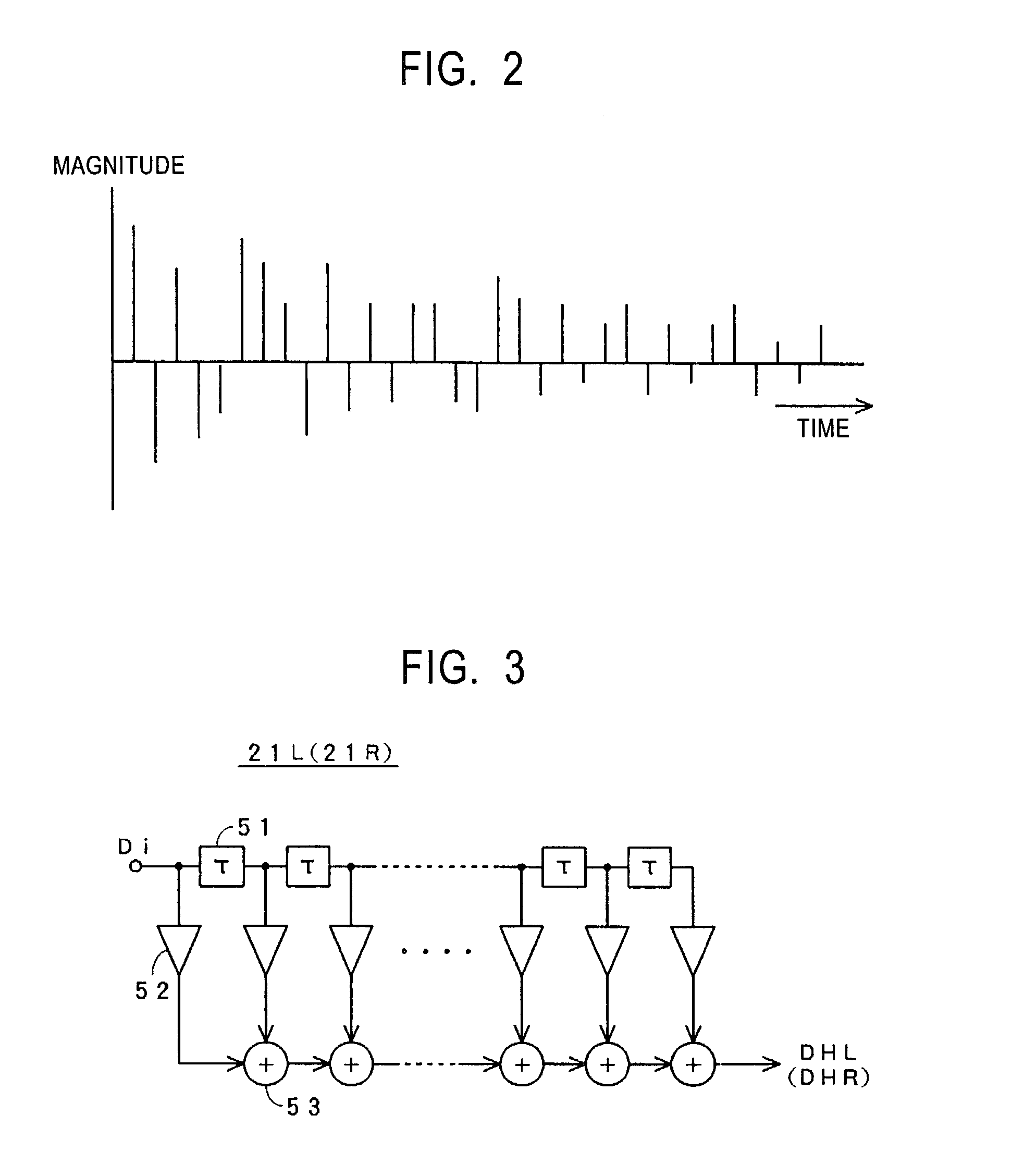Audio reproducing apparatus
a technology for reproducing apparatus and sound, applied in the direction of stereophonic arrangments, transducer details, earpiece/earphone attachments, etc., can solve the problems of limiting speaker layout, unable to independently separate signals, and obtaining sound fields that are extremely strange, so as to suppress the circuit scale, suppress the amount of calculation, and the effect of clear sound-image locating
- Summary
- Abstract
- Description
- Claims
- Application Information
AI Technical Summary
Benefits of technology
Problems solved by technology
Method used
Image
Examples
first embodiment
[0061][ FIG. 1 to FIG. 11]
[0062]A case in which a low-frequency component is extracted from an input audio signal and added to an impulse-response-output audio signal will be described according to a first embodiment.
[0063][Monaural Reproduction by Headphones with FIG. 1 to FIG. 9]
[0064]FIG. 1 shows a case according to the first embodiment, in which one-channel sound is reproduced by headphones with the sound image thereof being located at any position outside the head of the listener, for example, at a position on the center plane before the listener, as shown in FIG. 21.
[0065]In this case, transfer functions HR and HL from a sound source 5 where the sound image is to be located, to the right and left ears 1R and 1L of the listener 1 are measured or calculated in advance.
[0066]In the case shown in FIG. 1, an analog audio signal Ai which corresponds to a signal of the sound source 5 shown in FIG. 21 is input to a terminal 11 and is converted to a digital audio signal Di by an A / D co...
second embodiment
[0099][ FIG. 12 to FIG. 16]
[0100]A case in which a reverberation processing is performed and a low-frequency component of an input audio signal are added to an impulse-response-output audio signal will be described below according to a second embodiment.
[0101][Monaural Reproduction by Headphones: FIG. 12 to FIG. 15]
[0102]FIG. 12 shows a case according to the second embodiment, in which one-channel sound is reproduced by headphones with the sound image thereof being located at any position outside the head of the listener, as shown in FIG. 21.
[0103]In the case shown in FIG. 12, the output signals DHR and DHL of digital filters 21R and 21L are sent to reverberating circuits 23R and 23L, and reverberation processes are performed to the output signals DHR and DHL. An adder circuit 22R adds the output signal of a low-pass filter 32R, which is the same as the low-pass filter 32R shown in FIG. 9, to the output signal of the reverberating circuit 23R, and an adder circuit 22L adds the outpu...
third embodiment
[0118][ FIG. 17 to FIG. 20]
[0119]A case in which down-sampling or bandwidth restriction is applied to an input audio signal, and an impulse response is convoluted will be described according to a third embodiment.
[0120][When Down-Sampling is Applied: FIG. 17 to FIG. 19]
[0121]FIG. 17 shows a case according to the third embodiment, in which, when one-channel sound is reproduced by headphones with the sound image thereof being located at any position outside the head of the listener, as shown in FIG. 21, the input audio signal is down-sampled and an impulse response is convoluted.
[0122]In the case shown in FIG. 17, the output digital audio signal Di of an A / D converter 12 is sent to a down-sampling filter 15, and the sampling frequency of the digital audio signal is reduced to a half of the original frequency, for example, converted from 44.1 kHz to 22.05 kHz. The digital audio signal to which down-sampling has been applied is sent to digital filters 21R and 21L.
[0123]The digital filte...
PUM
 Login to View More
Login to View More Abstract
Description
Claims
Application Information
 Login to View More
Login to View More - R&D
- Intellectual Property
- Life Sciences
- Materials
- Tech Scout
- Unparalleled Data Quality
- Higher Quality Content
- 60% Fewer Hallucinations
Browse by: Latest US Patents, China's latest patents, Technical Efficacy Thesaurus, Application Domain, Technology Topic, Popular Technical Reports.
© 2025 PatSnap. All rights reserved.Legal|Privacy policy|Modern Slavery Act Transparency Statement|Sitemap|About US| Contact US: help@patsnap.com



